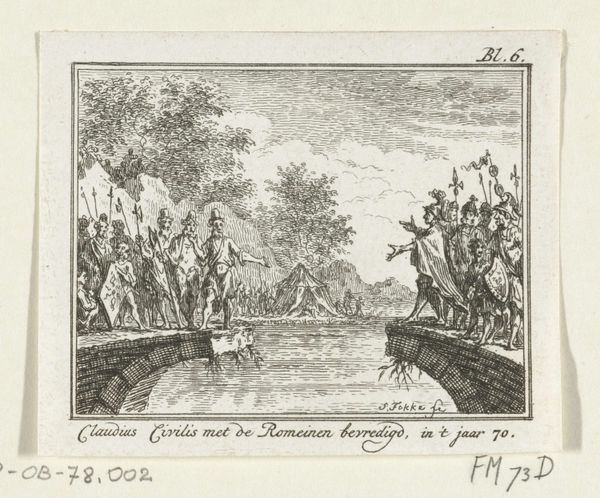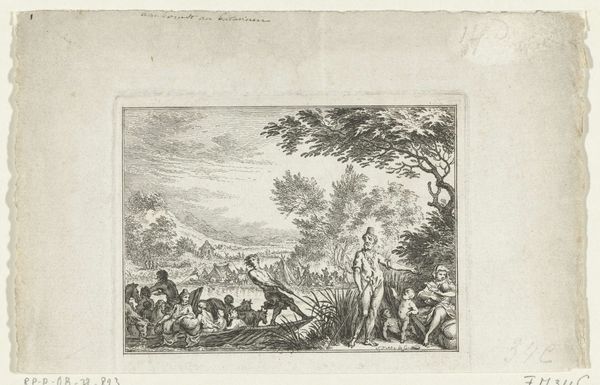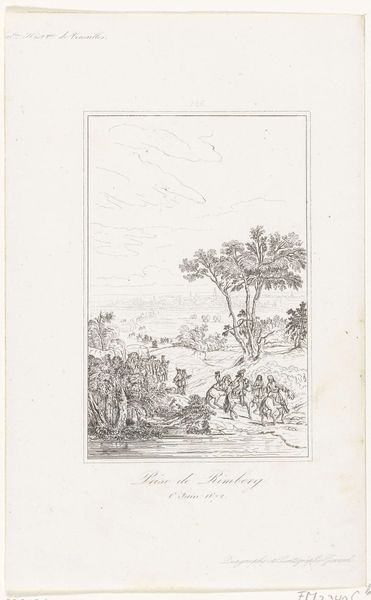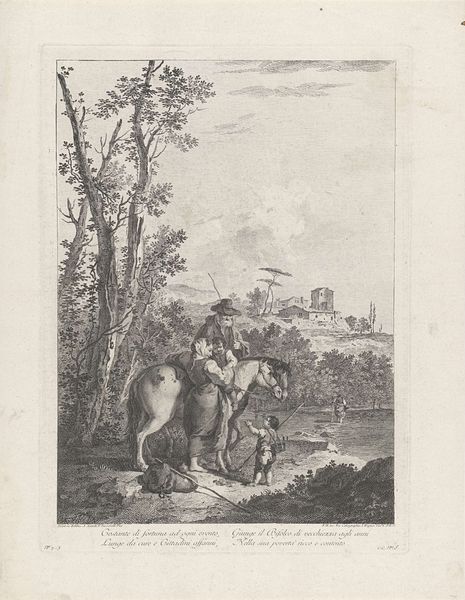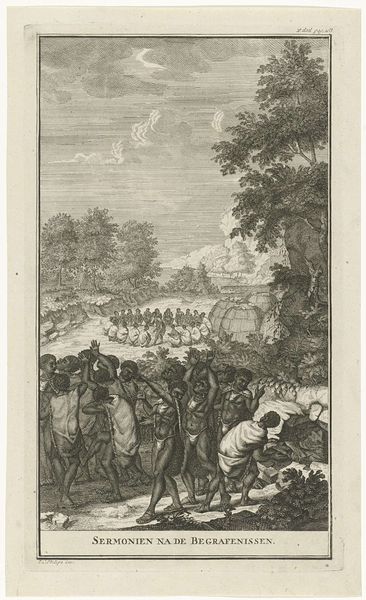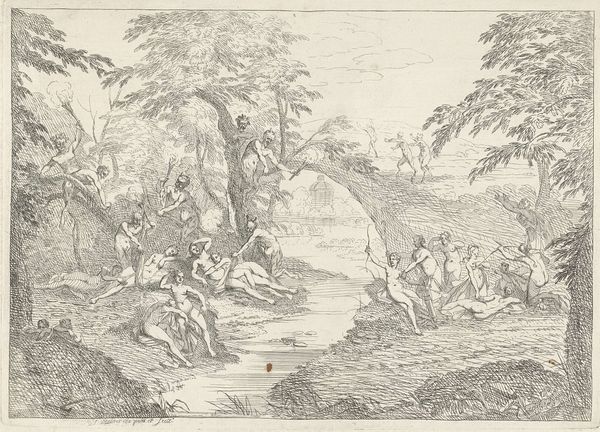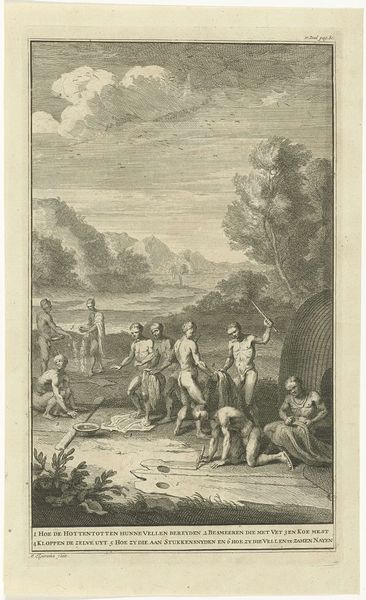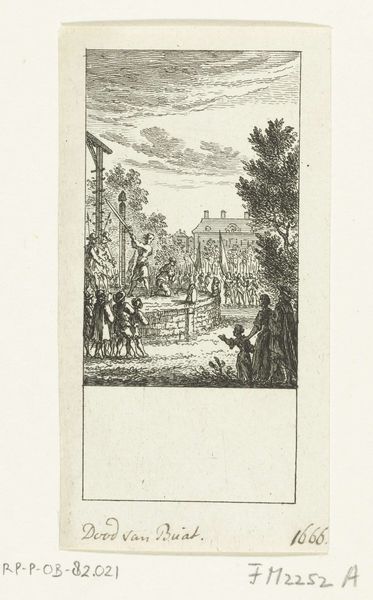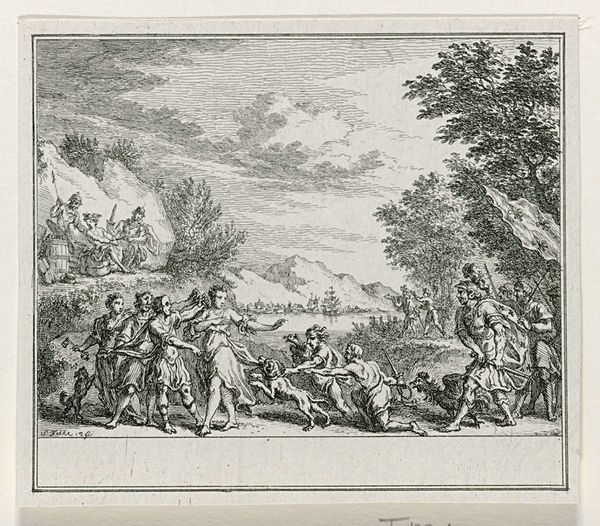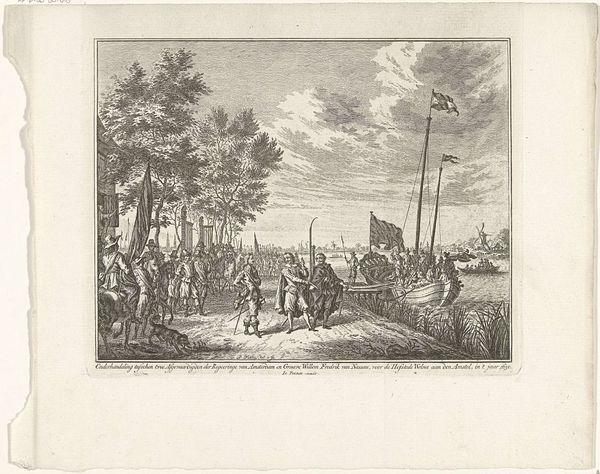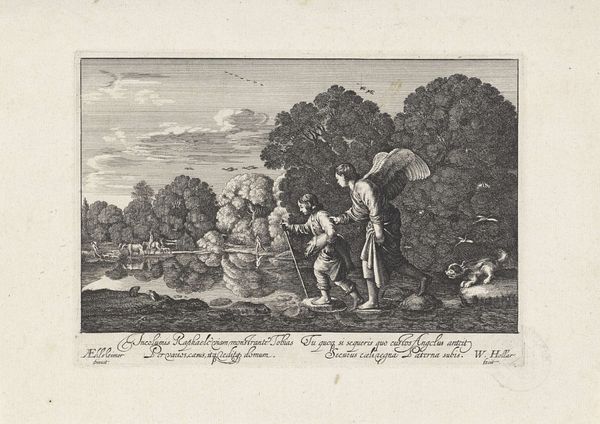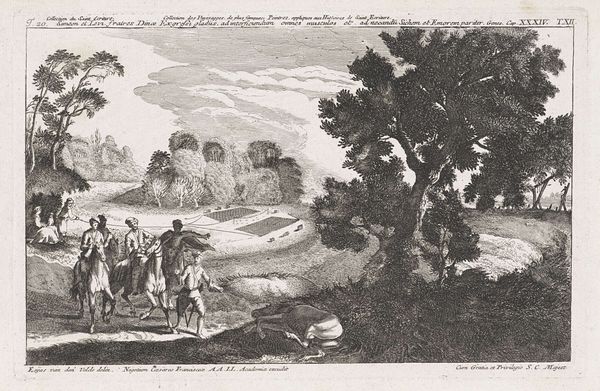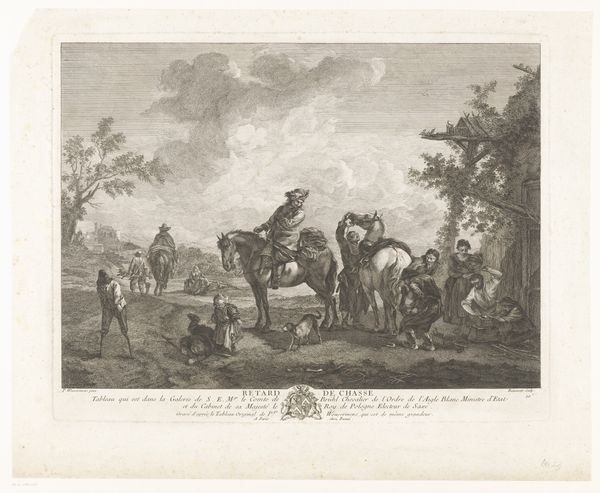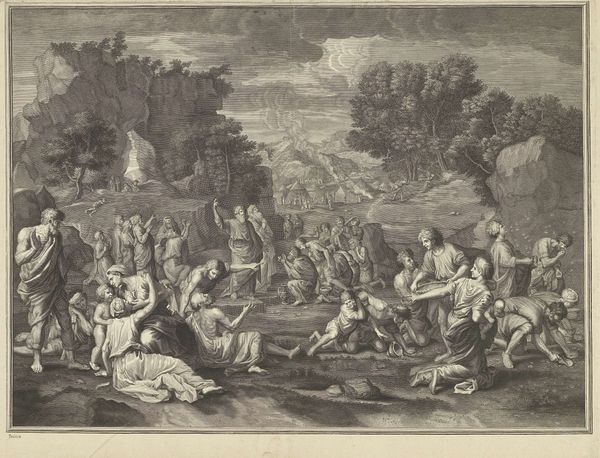
Civilis en Cerialis onderhandelen op de afgebroken brug, 69-70 1782 - 1800
0:00
0:00
simonfokke
Rijksmuseum
print, engraving
#
narrative-art
# print
#
landscape
#
classical-realism
#
history-painting
#
engraving
Dimensions: height 92 mm, width 105 mm
Copyright: Rijks Museum: Open Domain
Curator: This is a print by Simon Fokke, dating roughly from 1782 to 1800, titled "Civilis en Cerialis onderhandelen op de afgebroken brug, 69-70", housed right here at the Rijksmuseum. Editor: It strikes me as surprisingly static, given the dramatic historical scene. It’s stark and rather…unromantic for a negotiation amidst war. The stark lines of the engraving amplify that sense of formality. Curator: Interesting observation! The key is "engraving." This reproductive medium relies on transferring imagery via an incised metal plate onto paper. Consider Fokke's labor: each line, each figure, meticulously etched, reflective of the late 18th-century printmaking industry where quality reproduction was paramount. Editor: I am more struck by the Roman iconography: banners, armor, and broken bridge representing discord, failed unity, perhaps. Look at how Civilis and Cerialis face each other, gestures mirroring, almost echoing – a visual representation of negotiation itself, balanced by underlying tension of Roman Imperialism. Curator: Indeed. The choice to depict the generals negotiating rather than engaging in combat says something. It reveals a societal interest in diplomacy as much as in military conquest. Also, look closely; do you see differences in how the Romans versus the Batavians are clothed and armed? How does it reflect societal status? Editor: The artist uses those contrasts to highlight perceived cultural distinctions, or maybe emphasize resistance? It prompts consideration of cultural identity as presented by Fokke through classical artistic techniques and embedded cultural symbols and cues about "Roman-ness" and "Batavian-ness" at the time. Curator: Right, prints like these circulated widely, contributing to national narratives. Now consider this, such detail, and skill, etched in copper, multiplied across hundreds of prints: mass consumption of art, accessible even to a wider audience than traditional paintings would reach! Editor: Exactly, the symbols carry powerful ideological meaning. These are deliberate choices, laden with political commentary for a knowledgeable viewership. It makes us ask: what are those negotiations trying to achieve? What values are being affirmed and challenged through that moment? Curator: Fascinating. Reflecting upon these marks in ink, multiplied and consumed, reveals much about Dutch society's artistic and industrial values back then! Editor: Yes! And digging into the artwork unearths lasting conversations about history, symbols, and political implications embedded in images, persisting even in today's Rijksmuseum setting.
Comments
No comments
Be the first to comment and join the conversation on the ultimate creative platform.
